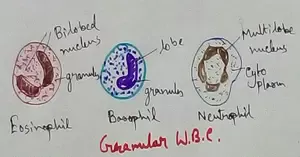Importance of Rocks and Soil
We will know the importance of rocks and soil in our Earth. Our Earth is made up of rocks and soil. Rocks are made up of tiny grains. They are called minerals. Rocks are generally hard but some of them are very hard. Diamond is the hardest rock. Coal which we use as a fuel is not a very hard rock. A few rocks like chalk are soft. Some of the rocks are granite, slate, amethyst, ruby and emerald.
Soil is the uppermost layer of the earth. It has been formed with small pieces of broken rocks. Earlier our Earth had only rocks. Over million s of years, the wind, the force of water, the heat of the Sun and changes in the weather started to break these rocks into smaller rocks. These were further broken into very small pieces and finally they formed the soil.
Soil contains different layers like topsoil, subsoil and bedrock. This arrangement of layers is called the soil profile of a place.
The topsoil is the uppermost layer of soil which is dark
colored. The subsoil is under the topsoil which is lighter colored. The bedrock
is the bottom layer of the soil which is formed with solid rock.
The soil also contains some rotten pieces of dead plants and animals mixed with it. Rotten pieces of plants and animals are known as humus. This dark brown humus is very useful for the growth of plants.
Soil differ in color fro place o place. At some places it is light brown, at some places dark brown and at other places red. Soils are different because they are formed with different rocks. The soil also contains air and water present in it.
We know there are different types of soil and these soils also support our life and they are helpful to us.
From Importance of Rocks and Soil to HOME PAGE
Recent Articles
-
Formed Elements of Blood | Erythrocytes | ESR |Leukocytes |Neutrophils
Jan 15, 26 01:25 AM
Formed elements formed elements are constitute about 45 % of blood afeias haematocrit value packed cell volume mostly of red blood corpuscles and are of 3 types- erythrocytes, leukocytes and blood pla… -
What Is Plasma? | Blood Plasma | Proteins | Nutrients | Cholesterol
Nov 07, 25 10:29 AM
Blood is a mobile fluid which is a connective tissue and is derived from the mesoderm like cell any other connective tissue. Colour of blood is reddish and that flows inside the blood vessels by means… -
Disorders of Respiratory System | Tuberculosis | Pleurisy | Emphysema
Oct 28, 25 11:39 PM
Tuberculosis is very common disease and is caused by a type of bacteria called Mycobacterium tuberculosis. This disease causes different trouble in the respiration and infection of several parts of th… -
Regulation of Respiration | Respiratory Centres | Inspiratory Area |
Oct 14, 25 12:13 AM
Respiratory Centre is the area that controls the rate of respiration and it is observed to be located in medulla oblongata and pons. Respiratory Centre has the following will dispersed components like… -
Explain Transport of Gases | External Respiration | Tissue Respiration
Oct 09, 25 11:35 PM
In humans gaseous exchange is completed in the following ways the steps are - External Respiration or Breathing - Breathing in false taking in of Oxygen and giving out of carbon dioxide in the body. M…





New! Comments
Have your say about what you just read! Leave me a comment in the box below.